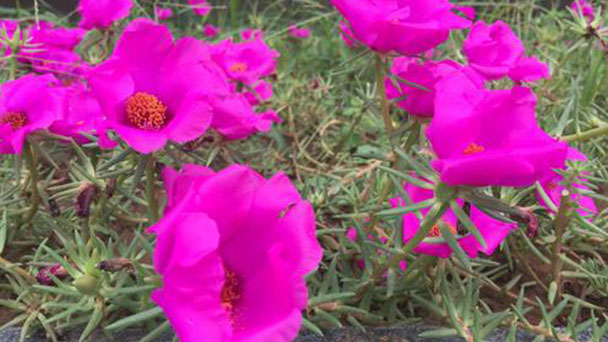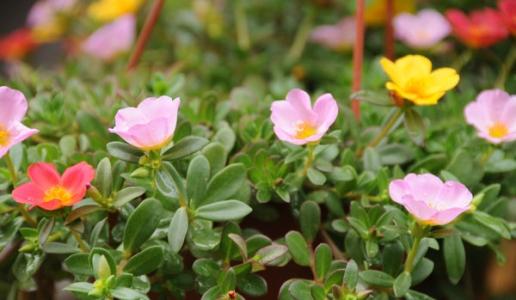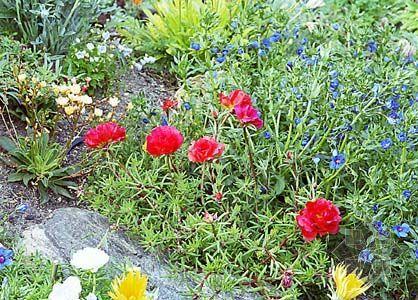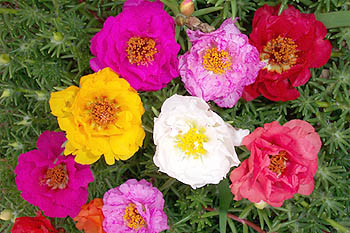Scutellaria barbata (barbated skullcup herb) profile
Written by Maggie
Mar 30 2021

Scutellaria barbata, also called barbated skullcup herb, is a perennial herb of the genus Scutellaria in the family Scutellaria. Scutellaria barbata is an excellent flower for decorating grasslands, slopes and roadside. It is also suitable for planting at the edge of flower beds and flower borders. Small and exquisite potted plants can be displayed in balconies, windowsills, corridors, doorways, pools and courtyards.
Scutellaria barbata is found in Argentina, southern Brazil, Uruguay and the parks of mainland China. scutellaria barbata is often found in the wild and is native to South America. Half branch lotus whole grass into medicine, with heat and detoxification, activating blood, removing blood stasis, swelling and pain, anti-cancer and other functions. Cold taste sour, the whole grass contains a variety of vitamins, trace elements and amino acids and other components. Scutellaria barbata has the effect of cooling blood and detoxification, dispersing blood stasis and relieving pain, detumescence and clearing heat and dampness.
Scutellaria barbata picture

Morphological characteristics of Scutellaria barbata
Rhizome
Scutellaria barbata is a perennial herb. The rhizome of Scutellaria barbata is short and stout and gives rise to tufted whisker roots.
Stems are erect, 12 -- 35 (55) cm tall, tetragmatic, base group 1 -- 2 mm, glabrous or sparsely appressed hairs on upper part of inflorescence axis, unbranched or with more or less branched.
Leaf
Leaves of Scutellaria barbata are short or subsessile, stalks 1 -- 3 mm long, recumbent, sparsely hirsute; Blade triangular cone lanceolate, ovoid or eggs sometimes ovoid, 1.3 3.2 cm long, 0.5 ~ 1 (1.4) cm wide, apex acute, base broadly cuneate or nearly cross-sectional shape, edge have shallow teeth of the steam and blunt, olive green, light green, sometimes with purple, below two sides along veins, hydrophobic was close to the secondary or glabrous, lateral veins 2 or 3 pairs, and midrib raised under the sag.
Flowers
The flowers of Scutellaria barbata are solitary in the axils of the upper leaves of stems or branches, flowering stems 4 -- 11 cm long; Bracts are proximally leaflike, but smaller, up to 8 mm long, distally smaller, 2 -- 4.5 mm long, elliptic to oblong, entire, scattered above with sparsely hirsute lower veins; Pedicels of Scutellaria barbata are 1 -- 2 mm long, puberulent, with a pair of ciliate acicular bracts ca. 0.5 mm long at center. Calyx flowering ca. is 2 mm long, puberulent along veins outside, margin shortly ciliate, shield ca. 1 mm tall, calyx 4.5 mm long, shield 2 mm tall at fruit. Corolla of Scutellaria barbata is purplish blue, 9 -- 13 mm long, pubescent outside, sparsely pubescent inside throat; The basal capsule of the crown tube is large, 1.5 mm wide, and gradually widens upward to 3.5 mm wide at the throat. Coronal eaves 2-lipped, upper lip galeate, semicircular, 1.5 mm long, apex rounded, middle lobe of lower lip trapezoid, entire, 2.5 mm long, 4 mm wide, 2 lateral lobes triangular-ovoid, 1.5 mm wide, apex acute. Scutellaria barbata has 4 stamens, anterior pair longer, slightly exposed, with fertile half herb, vestigial half herb is not obvious, posterior pair shorter, hidden, with whole herb, with bearded locules cleft; Filaments of Scutellaria barbata are flattened, anterior to medial posteriorly to both underside puberulent. Style is slender, apex acute, lobed. Disk is discoid, anterior eminence, posteriorly extending into a short stalk of ovary. Ovary of Scutellaria barbata is 4-lobed, lobes equal large.
Fruit
Scutellaria barbata is nutlet brown, oblate globose, ca. 1 mm in diameter, with verruculosa.
Ecological habits of Scutellaria Barbata
Scutellaria barbata prefers wet conditions, and areas that are too dry do not grow well.
Scutellaria barbata is found near paddy fields, streams or on wet grasslands, up to 2,000 metres above sea level.
Scutellaria Barbata likes warm climates and humid, semi-cloudy environments. Scutellaria barbata does not require strict soil. Scutellaria barbata is better to grow sandy loam or humus loam with deep soil layer, loose, fertile and good drainage. Scutellaria barbata is not suitable for planting in low-lying plots with heavy soil viscosity and easy water accumulation. Scutellaria barbata is often wild in hilly and flat areas of the field or stream side.
Growing methods of Scutellaria barbata
Site preparation & fertilization
Plot selection, every 667m2 spread rotten manure 2000 kg, the depth of ploughing 15 cm, and along with the ploughing, every 667m2 spread ammonium dihydrogen phosphate, urea 50 kg. Rake fine leveling for 1.2m wide bedding.
Seedling transplanting
In the whole border, sowing according to 12 ~ 15 grams/square meter, before sowing with 60℃ water for 24 hours, out a little dry, according to the ratio of 1 to 100 and fine sand soil (fine sieve) mixed evenly, then evenly spread into the border. Cover the grass mat or agricultural film, spray water 1 time a day, keep wet, 15 ~ 20 days germination. After the seedlings of Scutellaria barbata out of the whole, remove the covering, then spray 1 times water, after every 3 ~ 4 days spray 1 times water. Transplant to the field when the seedling height is 5 cm, row plant spacing is 20 cm each, 1 plant in each hole.
Live in the field
To make the seed of Scutellaria barbata that direct seeding plants germinates completely, had better choose to plant on an overcast rainy day. Drill according to row spacing 25 ~ 30 cm trench, trench depth about 4 cm; The acupoint planting is about 30 cm away from the acupoint. Sowing, the seeds of Scutellaria barbata evenly scattered in the trench, cover 0.5 cm thick loose fine soil fertilizer or vegetation ash, can also be used agricultural film or grass mat cover, to keep the soil moist. Out of the whole seedling to remove cover, do well seedling management.
Intertillage weeding and topdressing
After the seedling, when the seedling height 1 ~ 2 cm, combined with weeding pouring 1 time of rareted human feces water, every 667 square meters 1000 kilograms for raising seedling fertilizer. When the height of the Scutellaria barbata seedlings is 4 ~ 5 cm, thinning and replenishing seedlings should be carried out. Finally, seedlings should be selected according to the plant spacing of 3 ~ 4 cm, and the missing seedlings should be replenished at the same time. After thinning or fixing seedlings, each applies 1 times human excrement water. We need to keep the field without weeds later, after each harvest, all should topdressing 1 time, in order to promote new branches and leaves germination.
Always keep the soil moist and not short of water during the seedling stage. Irrigation should be timely in case of drought. Rainy season and every time after irrigation, to timely drainage ditch drainage, to prevent water flooding roots and seedlings.

How Scutellaria Barbata propagation
Scutellaria barbata is mainly propagated by seed, but can also be propagated by division.
Seed propagation
Seed propagation is more direct seeding. Drill according to row spacing 25-30 cm trench, trench depth about 4 cm; The acupoint seeder will open the acupoint according to the distance of the acupoint about 27cm. When sowing, the seeds will be mixed with livestock dung water in the vegetation ash, mixed into seed ash, and then evenly scattered in the ditch or hole, covered with a layer of fine soil or vegetation ash, the thickness shall not exceed 0.5 cm. After sowing, the soil should be kept absolutely moist before the emergence of seedlings, and the seedlings can emerge about 20 days after sowing.Use 1.5-2 kg of seeds per acre.
Division propagation
Scutellaria barbata division propagation was carried out in spring and summer. Dig up the old roots of the plants, select robust plants without diseases and insect pests for dividing, each Scutellaria barbata has 3-4 seedlings, according to the hole distance of about 27 cm hole planting, watering after cutting.
Disease control of Scutellaria barbata
Rust
Scutellaria barbata mainly harms the leaves. The back of the leaves of the affected plants show yellowish brown spots. In severe cases, the leaves turn yellow, roll and fall off.
Prevention and control methods: early onset of 97% anti rust sodium 300 ~ 400 times (plus a small amount of laundry powder), or with the United States 0.2 ~ 0.3 degrees of sulfur mixture every 7 ~ 10 days spray 1 times, continuous 2 ~ 3 times.
The disease
It is easy to occur in high temperature and rainy season, and the leaves show dark spots like water stains, then wilting and drooping.
Prevention and control method: spray with 1∶1∶120 Bordeaux solution or 800 times dixone solution in the evening.
The main insect pests
Scutellaria barbata is mainly used for aphids, African mole cricket, and liturium moth, etc. It can be controlled by spraying 40% diethoate emulsion 1000 times liquid or 50% phosphoamine emulsion 1000 times liquid. The former can be controlled by diethoxane, while the latter can be controlled by 50% dichlorvos 1000 times liquid spray.
The distribution region of Scutellaria Barbata
Scutellaria Barbata is distributed in Hebei, Shandong, southern Shaanxi, Henan, Jiangsu, Zhejiang, Taiwan, Fujian, Jiangxi, Hubei, Hunan, Guangdong, Guangxi, Sichuan, Guizhou, Yunnan and other provinces.
Scutellaria barbata is also found in northeastern India, Nepal, Myanmar, Laos, Thailand, Vietnam, Japan and North Korea.
The Scutellaria Barbata pattern wood was taken from Nepal.
Scutellaria Barbata flower language
Sunshine and vigor!

Latest Updated
- Benefits of Bugleweed - 7 Science-backed Health Benefits
- Bugleweed Dangers & Side Effects - Is It Poisonous?
- How to Plant Evergreen Trees - What You Should Know
- When to Plant Evergreens - Grow Guide for Evergreen Trees
- 12 Wonderful Evergreen Shrubs for Your Garden
- 12 Popular Evergreen Plants with Pictures for Beginners
- When And How To Prune A Lilac Bush Like a Pro
- How to Grow & Care for Lilac Vine (Hardenbergia Violacea)
- Japanese Lilac Tree (Syringa Reticulata) Care & Propagation Guide
- Shumard Oak Pros and Cons - What to Know
Popular Articles
- Winter maintenance of Antirrhinum Majus
- How to Grow Terminalia Mantaly Tree
- How to Grow and Care for Crossostephium Chinense
- How to grow Antirrhinum Majus in spring
- Peristeria Elata (Dove Orchid) Profile: Info & Care Guide
- Underwatered Snake Plant (Sansevieria Trifasciata) - Signs And How To Fix
- How to Care for Brazilian Jasmine Plant (Mandevilla Sanderi)
- How to Grow & Care for Graptopetalum Purple Delight in Summer
- Rosa Chinensis (China Rose): Plant Growing & Care Tips
- How to Care for Baby Sun Rose (Aptenia Cordifolia)